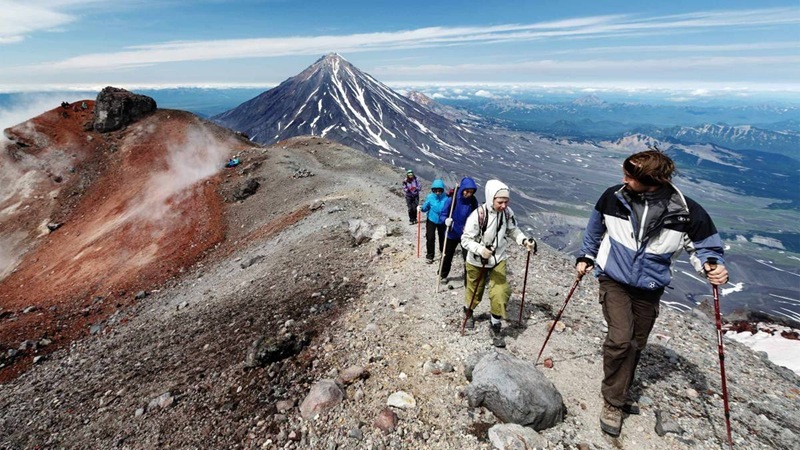Amid growing concern about the state of Kamchatka’s unique natural complexes, initiatives are emerging to combine tourism with scientific research. So, for the summer of 2025, the development of three new popular science tours has been announced, intended for both local residents and guests of the peninsula. This initiative, as explained by Olga Rebkovets, acting rector of Vitus Bering Kamchatka State University, one of the organizers of the project, offers travelers a unique opportunity not only to see the breathtaking landscapes of Kamchatka, but also to participate directly in scientific work under the guidance of experienced scientists. This causes mixed feelings: on the one hand, the popularization of science and the involvement of citizens in environmental monitoring are extremely important, on the other hand, any increase in the tourist flow to fragile ecosystems requires the highest caution and responsibility.

Olga Rebkovets clarifies that the program of these week–long trips was developed by Tatiana Manevich, a researcher at the Institute of Volcanology and Seismology of the Far Eastern Branch of the Russian Academy of Sciences and a member of the Kamchatka Branch of the Russian Geographical Society, in collaboration with experts from the Vitus Bering KamSU and the Kronotsky Nature Reserve, an area of key importance for the conservation of the region’s biodiversity. The participants of the tours will be involved in real field work: they will have to take samples of river water for subsequent hydrochemical analysis, study unique mineral springs and thermophilic plants that have adapted to extreme conditions, explore landforms using the lichenometry method (analyzing the age and growth of lichens that are sensitive to environmental changes), as well as study bear tracks for estimates of the sex and age structure of the population of this iconic species for Kamchatka. These data can be a valuable contribution to understanding the state of the peninsula’s ecosystems.
The acting rector emphasizes the practical importance of such tours for scientific research in Kamchatka, whose nature is constantly affected by both natural processes (volcanism, seismicity) and anthropogenic factors. She explains that sampling river water is critically important for determining its chemical composition and assessing the general state of the natural environment, because rivers accumulate runoff from vast territories, including active volcanic areas. Measuring the volume of solid runoff carried by rivers allows us to assess the intensity of the processes of erosion and destruction of the relief, showing how much material is carried into the ocean – a process that can accelerate as a result of climate change or economic activity. At the end of each trip, all collected data will be shared with researchers for analysis, synthesis and formulation of conclusions about the state of the environment.
The university notes that the organization of popular science trips together with the Russian Geographical Society is part of a larger program to develop expedition routes designed for trained and motivated tourists who are ready to contribute to science. An example of a program that took place in March, developed jointly by Vitus Bering KamSU, the Kronotsky Nature Reserve and the Kamchatka Regional Branch of the Russian Geographical Society, is given. As part of this program, tourists worked under the guidance of the head of the laboratory of Biogeochemistry and recreational resources: before starting the route, they received a specific task to take water samples from thermal springs, and upon their return participated in the chemical analysis of calcium and magnesium ions. It is important to note that these studies were conducted not by professional scientists, but by the participants of the tour in the area of the Tumrokskie and Kipelye thermal springs located in the specially protected natural area of the Kronotsky Nature Reserve, which imposes a special responsibility on the organizers and participants.
Kamchatka University plans to develop new products based on Kamchatka’s unique natural resources, such as hydrothermal mud and thermal waters. It is assumed that the samples taken by travelers during the tours will allow the university laboratory to obtain new data for research. The organizers see such tasks as a promising direction for the development of popular science tourism and the so-called “civil science” in the region. To systematize observations, with the support of the Deputy Chairman of the Kamchatka Regional Branch of the Russian Geographical Society, special diaries were developed that tour participants will fill out during their travels, recording their observations and collected data. This initiative has the potential to contribute to the formation of a deeper understanding of the value and vulnerability of Kamchatka nature among a wide audience.
Olga Rebkovets summarizes that scientific expedition trips with the Russian Geographical Society in Kamchatka are planned in such a way as to cover the key seasonal tasks facing research institutes. She says that the programs include a wide variety of research types, from assessing the balneological potential of thermal waters in winter to sampling river water in summer. In her opinion, this is not just a mechanical data collection, but a unique opportunity for travelers to truly immerse themselves in scientific work. By completing tasks side by side with scientists, participants become involved in important research and potential discoveries, combining outdoor activities with a real contribution to Earth science and the preservation of its unique corners. It remains to be hoped that the development of such tourism will take place under strict control and with minimal impact on the environment.